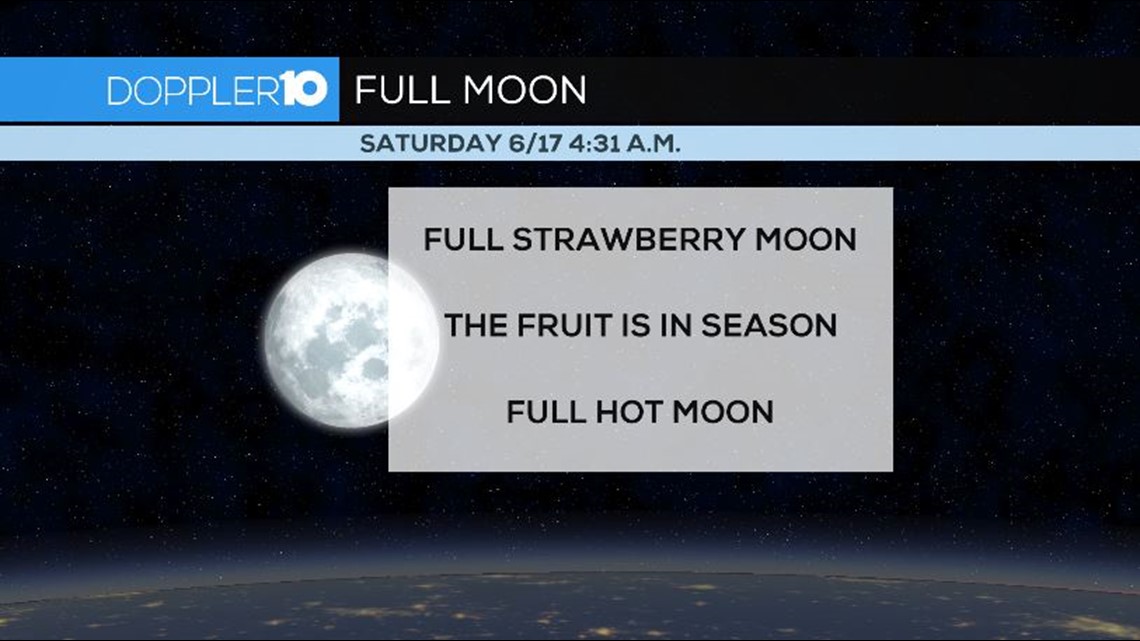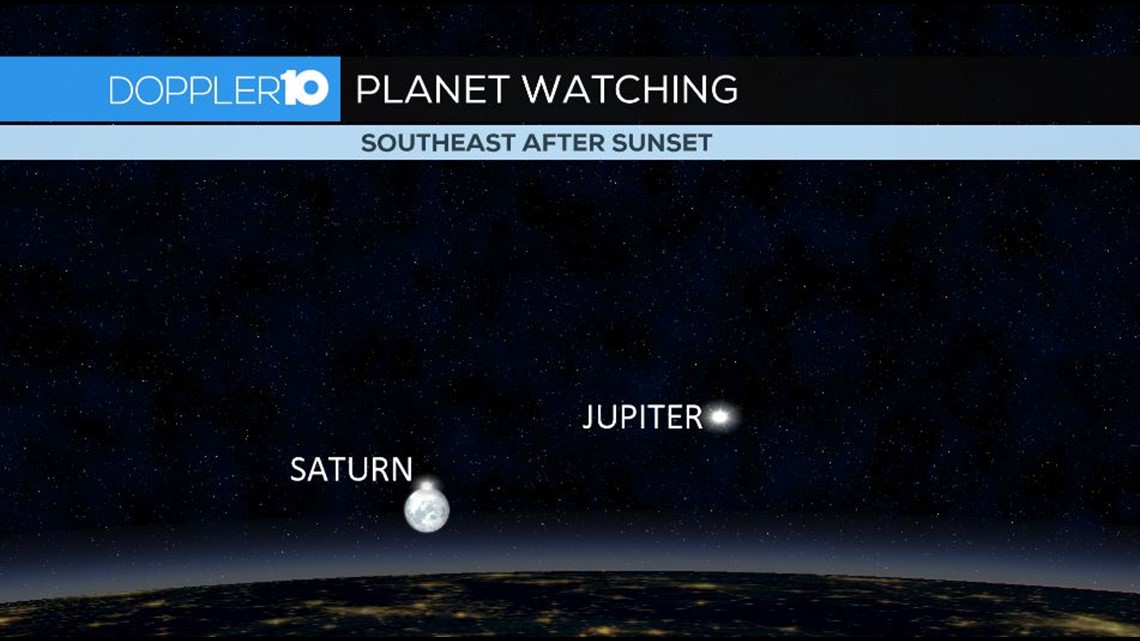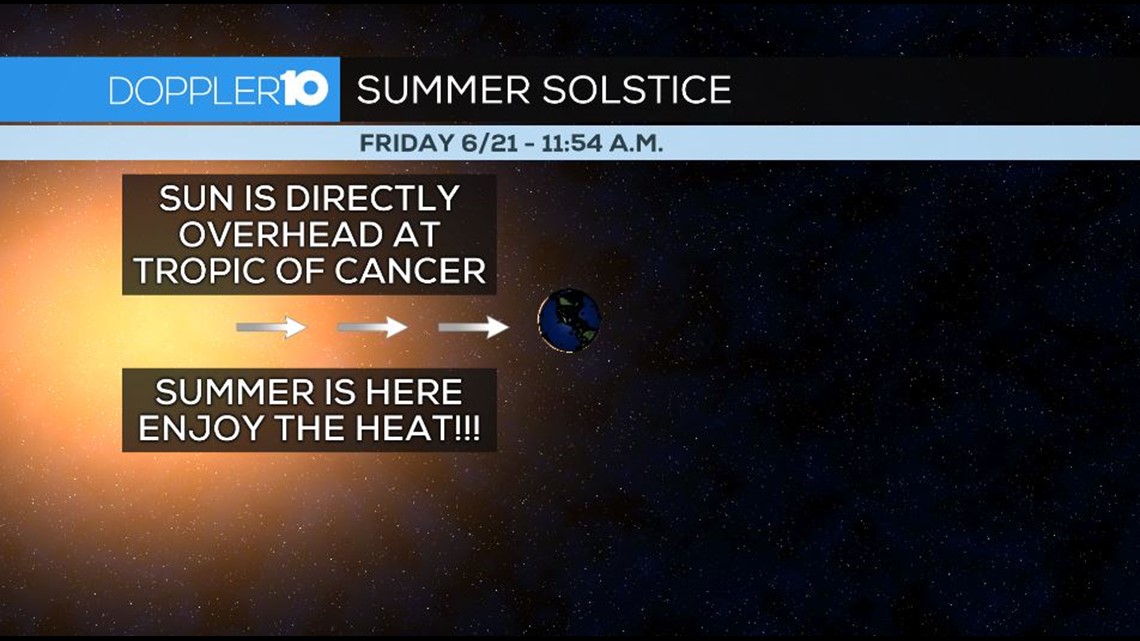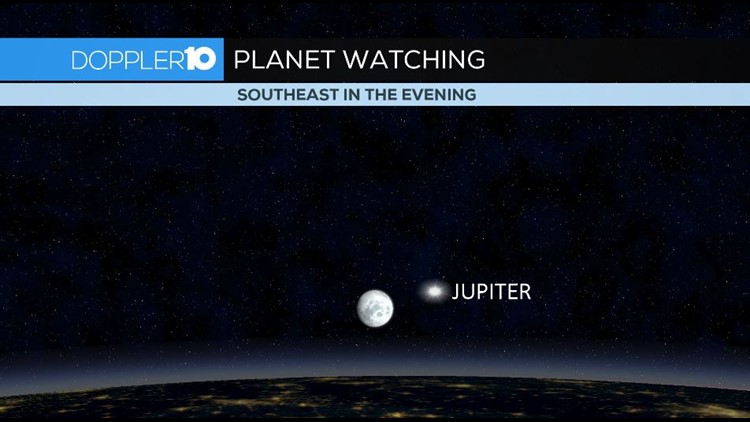On Sunday night, use the nearly Full Moon to locate the largest planet in the solar system. Jupiter will be very close to our satellite, just right and slightly above it. Look in the southeast in the evening.


The Full Moon officially arrives at 4:31 on Monday morning. This moon is called the Full Strawberry Moon because this is traditionally the time to harvest the delicious berries. It’s also known as the Full Hot Moon.


The Red Planet meets up with Mercury on Tuesday night. Mars and Mercury will appear very close to each other in the night sky, in fact, this is the closest the two have been in the sky since 2006. Look in the west-northwestern sky a little after sunset to find the pair. The two are low in the sky, so you’ll need a clear view of the horizon to see them.


The Moon will meet up with the Ringed Planet on Tuesday night as well. Right around midnight, look in the southeastern sky. The moon will be very easy to spot (if you have a clear view of the horizon) and Saturn will be just above it. Jupiter will be a little higher and right of the pair.


We welcome a new season on Friday morning. At 11:54 a.m. on June 21, the sun will be directly overhead at the Tropic of Cancer. This is when the sun is at its highest point in the sky and marks the summer solstice. Friday is also the longest day of the year in the Northern Hemisphere. If you’ve noticed the nights aren’t as long (and thus you don’t have as much time to stargaze) recently, here’s the reason. Happy hunting!



